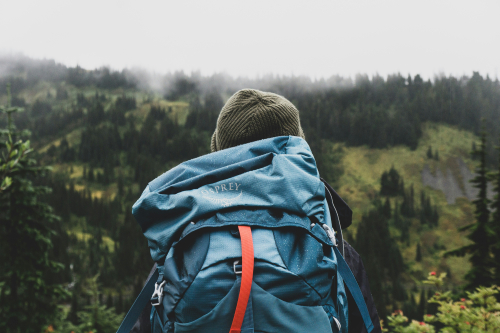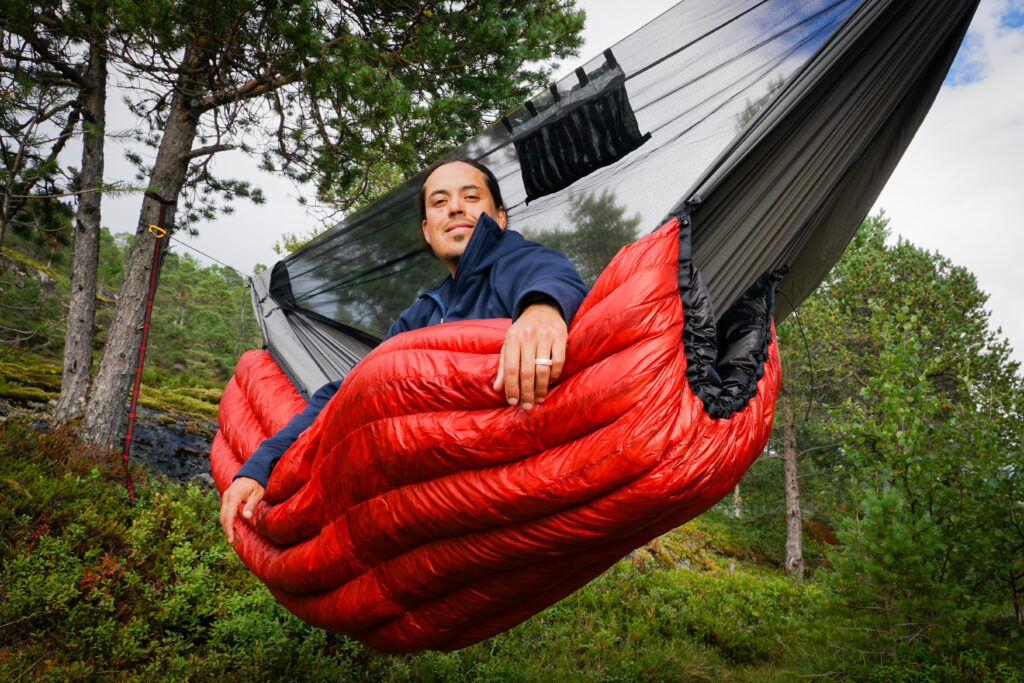The Truth About Ultralight Backpacking: Benefits and Drawbacks

Ultralight backpacking is a style of lightweight backpacking that emphasizes carrying the lightest and least amount of gear. While no technical standards exist, some hikers consider “ultralight” to mean an initial base weight of less than 4.5 kg (9.9 lb).
Base weight is the weight of a fully loaded backpack at the start of a trip, excluding worn weight and consumables such as food, water, and fuel. Ultralight backpackers believe a lower base weight allows them to cover longer distances and reduce stress on their bodies.
Growing Popularity and Reasons Behind It
Ultralight backpacking has become increasingly popular, especially among thru-hikers. The philosophy of “less is more” has resonated with many backpackers who aim to lighten their load. With a lighter base weight, hikers can hike faster and cover more miles with fewer injuries. This is particularly beneficial when thru-hiking a long-distance trail.
Benefits and Drawbacks of Ultralight Backpacking
The main benefit of ultralight backpacking is the reduced stress on the body and the ability to cover longer distances.
However, there are some drawbacks to consider. Gear made from some light high-performance materials can be more expensive and less durable. Additionally, ultralight gear may not be as comfortable in the long run as conventional gear.
It’s important to understand the tradeoffs and find the right balance between weight and functionality.
Ultralight backpacking offers a way to enhance the backpacking experience by carrying less weight. While it may not be suitable for everyone, it’s a growing trend that has its benefits, especially for long-distance hikers. As with any style of backpacking, it’s essential to find the right gear and techniques that work best for you.
Enhanced Mobility
One of the key benefits of ultralight backpacking is the enhanced mobility it provides. With a significantly reduced pack weight, hikers can more easily navigate difficult terrains.
The lighter load allows them to move with greater agility, making it easier to traverse rocky, uneven, or steep paths. Additionally, the decreased weight enables hikers to cover more distance in less time.
This increased efficiency can be particularly advantageous for those tackling long-distance trails or aiming to maximize their daily mileage.
Reduced Physical Strain
Carrying a heavy backpack can take a significant toll on the body, leading to issues like back pain, joint problems, and muscle fatigue. Ultralight backpacking helps mitigate these concerns by reducing the overall weight on the hiker’s frame.
With a lighter pack, there is less strain on the back, shoulders, and legs, lowering the risk of injuries and allowing for a more comfortable hiking experience. This can be especially beneficial for older hikers or those with pre-existing conditions that may be exacerbated by heavy loads.
Greater Enjoyment of Nature
When the physical burden of carrying a heavy pack is alleviated, hikers can devote more of their energy to appreciating the natural surroundings.
With less focus on the physical challenge, they can immerse themselves in the beauty of the landscape, observe wildlife, and truly savor the outdoor experience.
This enhanced connection with the environment can lead to a more fulfilling and rewarding backpacking trip, as hikers are able to fully engage with their surroundings rather than being preoccupied with the weight of their gear.
The benefits of ultralight backpacking extend beyond just the physical aspects, as it can also enhance the overall enjoyment and appreciation of the great outdoors. By reducing the burden of a heavy pack, hikers can experience greater mobility, reduced strain, and a deeper connection with nature, making for a more rewarding and memorable backpacking adventure.
Higher Costs
While ultralight backpacking offers numerous benefits, it comes with a higher price tag. Specialized ultralight gear, such as high-performance tents, sleeping bags, and backpacks, tends to be more expensive than traditional equipment. Additionally, as technology advances and new lightweight materials become available, ultralight backpackers may feel the need to frequently upgrade their gear to stay on the cutting edge, further increasing costs.
Limited Comfort
One of the tradeoffs of ultralight backpacking is the potential compromise in comfort. Minimalist gear, while lightweight, may not provide the same level of cushioning and insulation as heavier traditional equipment. This can lead to discomfort during long hikes or cold nights.
Furthermore, ultralight backpacking often requires leaving behind luxury items that can enhance the camping experience, such as comfortable camp chairs or extra clothing.
Potential Safety Risks
Carrying a lighter pack means having fewer backup supplies and a greater dependence on optimal conditions. Ultralight backpackers may have less room for extra food, water, and emergency gear, which can be crucial in unexpected situations. Additionally, if the weather takes an unexpected turn or a piece of gear fails, ultralight backpackers may be more vulnerable due to their limited supplies. It’s essential to carefully consider the risks and plan accordingly when embracing an ultralight approach.
While ultralight backpacking offers many benefits, it’s crucial to weigh the potential drawbacks and find the right balance between weight and functionality. By understanding the tradeoffs and planning accordingly, ultralight backpackers can enjoy the advantages of a lighter load while minimizing the risks.
Invest Wisely in Gear
When transitioning to ultralight backpacking, it’s important to prioritize investing in essential, high-quality items that will provide the most significant weight savings. Start with the “big three” – your shelter, sleep system, and backpack. Research and compare products from reputable ultralight brands to find the right balance of weight, durability, and functionality for your needs. While the initial cost may be higher, these core pieces of gear will serve you well in the long run.
Balance Weight and Safety
While the goal of ultralight backpacking is to reduce pack weight, it’s crucial to ensure you still carry the necessary emergency supplies and equipment to keep you safe in the backcountry. This includes items like a first-aid kit, navigation tools, and extra layers. Be prepared for unexpected weather conditions or other challenges by packing strategically and understanding the limitations of your ultralight gear. Finding the right balance between weight and safety will allow you to enjoy the benefits of a lighter pack without compromising your well-being.
Practice and Training
Transitioning to an ultralight backpacking setup requires a gradual approach. Start by slowly replacing heavier items with their ultralight counterparts, allowing yourself time to adjust to the new gear and packing system. Test your ultralight setup on shorter trips before tackling longer, more challenging hikes. This will give you the opportunity to become familiar with your gear, identify any areas for improvement, and develop the skills necessary to thrive in an ultralight environment. With practice and training, you’ll be able to confidently and safely embrace the benefits of ultralight backpacking.
By investing in essential, high-quality gear, balancing weight and safety, and gradually transitioning through practice and training, you can unlock the advantages of ultralight backpacking while minimizing the risks. This approach will help ensure a rewarding and enjoyable backcountry experience.
Summary of Benefits and Drawbacks
Ultralight backpacking offers several key benefits, including enhanced mobility, reduced physical strain, and greater enjoyment of nature. With a significantly lighter pack, hikers can navigate difficult terrain more easily, cover more ground in less time, and experience less back, joint, and muscle fatigue. This can be particularly advantageous for older or long-distance hikers. However, ultralight backpacking also comes with some drawbacks, such as higher gear costs, compromised comfort, and potential safety risks due to fewer backup supplies.
Personal Reflection on Ultralight Backpacking
As an avid hiker, I’ve experimented with both traditional and ultralight backpacking styles. While I initially struggled with the idea of paring down my gear, I’ve come to appreciate the freedom and agility that an ultralight setup provides. On a recent thru-hike of the Appalachian Trail, I was able to cover more miles each day with less strain on my body. This allowed me to truly immerse myself in the natural surroundings, rather than constantly focusing on the weight of my pack. That said, I did have to make some sacrifices in terms of comfort and backup supplies, which required careful planning and preparation.
Finding the Right Balance
Ultimately, the choice between traditional and ultralight backpacking comes down to personal preference and the specific demands of your trip. The key is to find the right balance that works for you – one that maximizes the benefits while minimizing the drawbacks. This may involve a gradual transition, testing different gear and techniques, and being honest about your priorities and comfort level. By doing so, you can unlock the advantages of ultralight backpacking while ensuring a safe and enjoyable outdoor experience.
You may also be interested in: Why You Should Try Hammock Camping In The Rain – Hammock Gear
Embark on your next adventure with Hammock Gear’s custom quilts! Tailor your comfort for the wild – choose your style, warmth, and size to craft your perfect eco-friendly outdoor companion, or grab a complete ultralight kit. Made in the USA for unparalleled quality and comfort. Trusted since 2009. Shop Now and tap into a community of nature lovers!⭐
Related Posts
The Best Camping Hammocks of 2024 – A Buyer’s Guide by Hammock Gear
A good camping hammock can completely transform how you experience…
Can Napping Hurt You? Unveiling the Pros & Cons of Daily Zzz’s
Napping, the act of taking a brief sleep during the…


